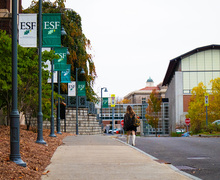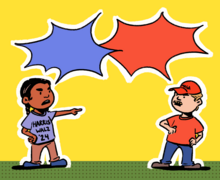Transgender teach-in investigates identity: Forum offers answers and challenges assumptions through six discussions
The bras, stilettos and lipstick came off only hours after they’d been put on. Performers of last Thursday’s Totally Fabulous Drag Show gender-bended for only one night.
But long after the show ended, many of the show’s questions of gender identity remained unanswered, said Adrea Jaehnig, director of the Lesbian, Gay, Bisexual and Transgender Resource Center.
This year, some campus officials decided to provide an outlet for these questions and answers through a Transgender Teach-In, Monday morning in the Hall of Languages.
‘When I walked away from the show last year, the question I had was, ‘Why is this so much fun?” Jaehnig said. ‘Why is this so much fun to play with gender and see how gender isn’t perfect and how freeing, in many ways, it felt to be in that environment.’
Within its six different sessions, the teach-in addressed many of the issues facing those who identify as transgender. The term transgender applies to those whose gender identity does not match the gender assigned at birth. It applies to transsexuals, drag queens or kings, cross-dressers or gender queers, or people who identify as neither male nor female, said Patty Hayes, the graduate assistant at the LGBT Resource Center and graduate student in social work.
In the first session, Rob Keefe, an associate professor in social work, and Hayes discussed the dangers transgender people face while living in jail, including rape, sexual abuse, unsafe conditions and lack of access to hormone therapy.
Rob Pusch, an instructional technology analyst in Project Advance who identifies as transgender, presented responses from various transgender college students in the second session of the event. Some of the students said they felt very uncomfortable participating in campus organizations for fear of ridicule or felt as though others assumed they were either gay or heterosexual.
Two students shared some of their experiences in finding gender neutral bathrooms and the process of officially changing their name.
‘I don’t always want to be an educator, sometimes I just want to live my life,’ said Ethan Young, a student at Onondaga Community College and teach-in presenter, who identifies as transgender. ‘But in a situation like this, I’m happy to do it, if it’ll make a difference.’
The third session focused on health care issues facing transgender people, including access to hormone therapy, disrespect or misunderstanding from medical officials, and unfair treatment, such as poorly executed mastectomies.
‘The problem is that there’s been no education,’ said presenter Kim Jaffee, an assistant professor of social work. ‘There’s no way of them knowing that these issues exist.’
SU can better accommodate the needs of transgender students through six inclusive policies and practice, Jaehnig said. It must add gender identity and expression to its non-discrimination policy, provide on-going education and workshops, complete an inventory of what resources currently exist for transgender students, identify what essential elements transgender students need, and encourage faculty to integrate transgender media into their courses.
‘We preach diversity, so it’d be good to actually show it in practice, not just on paper,’ said Brad Brechler, a senior sociology and political science major.
Presenters of the fourth session focused on sexuality and gender, saying that many people assume transgender people are gay or lesbian. But sexual orientation, sexual identity and gender identity are separate entities, said Victoria Munoz, professor of psychology and women’s studies at Wells College.
‘Once you become comfortable with yourself, you realize how many people are uncomfortable with you,’ said Stephanie Cyganovich, who transitioned from male to female last year and identifies as a lesbian. ‘But all that matters is who I am, not what I am.’
Some participants and organizers of the drag show reviewed their experiences in another session and explain how it relates to being transgender.
James Kaechele, the president of the Pride Union who performed as Ginger in the show, said the night of shaving body hair and painting nails was a commentary on gender expression in society.
The performers learned what women must do to meet their gender requirement, and the blending of both male and female gender identity allowed them to see the societal constructs of gender, Kaechele said.
‘It is fun to mess with people’s gender and sexual orientation in a safe environment,’ Hayes said.
The teach-in concluded with a documentary called ‘Just Call Me Kade,’ following the transition of Kade Collins, a 16-year old female to male. The audience watched as Kade experienced hormone therapy, survived depression and maintained relationships with friends and family.
‘We wanted to end on something more triumphant,’ said Margaret Himley, co-chairwoman of the senate of the LGBT committee and associate professor in the writing program. ‘It makes me tearful, and it makes me happy.’
After attending the teach-in, organizers hope that the campus community may begin to ask questions and consider making changes that could make the university a safe and welcoming place for transgender students.
‘My hope is that after all of these conversations and awareness-raising talks, we can’t go back to the normal ways of thinking about the LGBT community, and we have a better grasp on resources on transgender people and what’s available,’ Jaehnig said. ‘This is something that campuses across the country are dealing with. This is not a phase. It’s not going away.’
STAFF WRITER DAVE ROBBIE CONTRIBUTED TO THIS STORY
Published on February 23, 2004 at 12:00 pm





